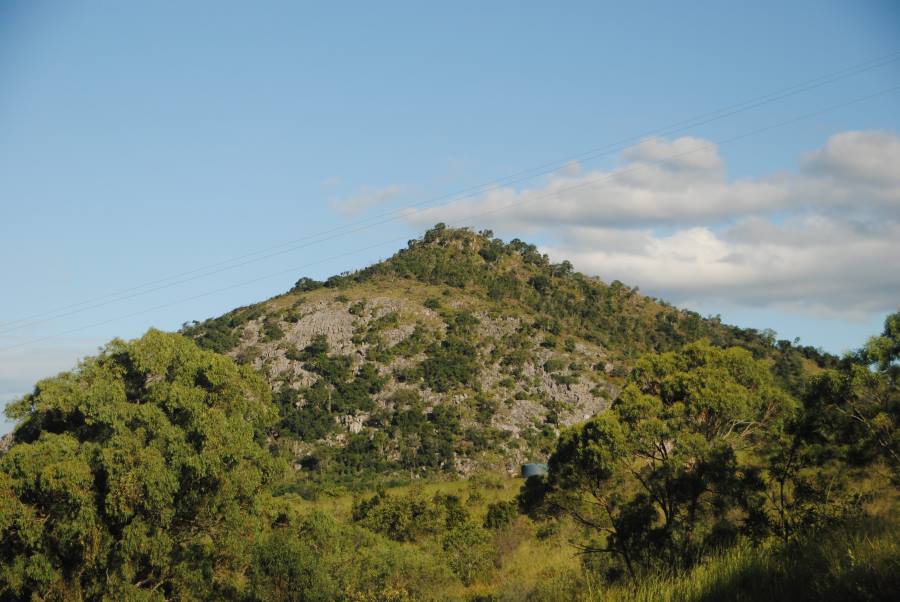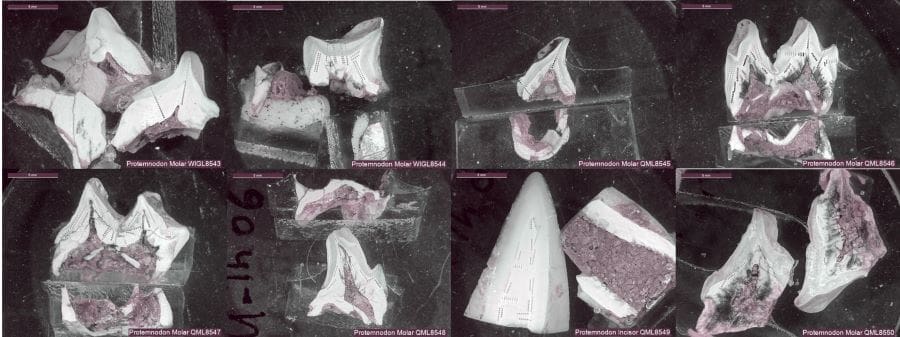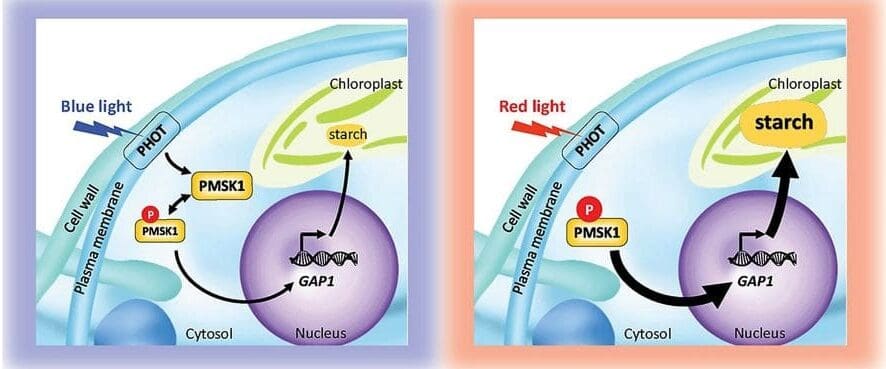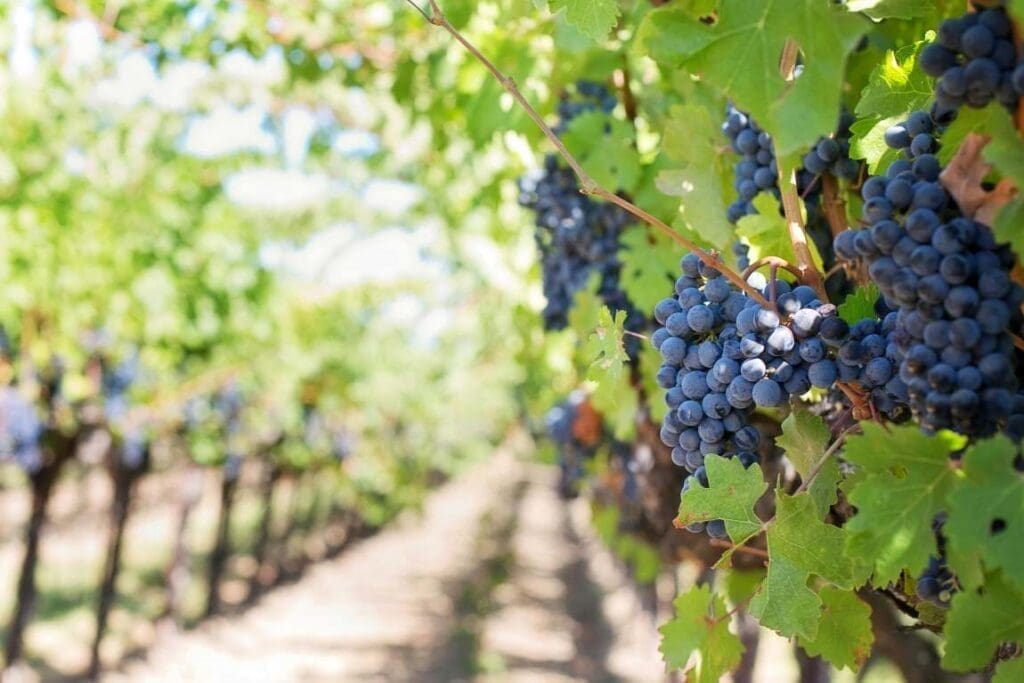Explore the latest insights from top science journals in the Muser Press daily roundup, featuring impactful research on climate change challenges.
In brief:
Giant extinct kangaroos preferred home to roam
Giant kangaroos stuck close to home and went extinct when climate change caused that home to disappear, according to a study published in the open-access journal PLOS One by Christopher Laurikainen Gaete of the University of Wollongong, Australia and colleagues.
In large mammalian herbivores, bigger body size is often correlated with a wider home range, but whether this is true for extinct Australian megaherbivores is unclear. In this study, Laurikainen Gaete and colleagues used fossil data to predict the home range of the prehistoric, giant kangaroo Protemnodon and its implications for the species’ extinction.

Strontium isotopes in animals’ fossilized teeth reflect the geology of the region where it found its food. The researchers analyzed Strontium isotopes from Protemnodon teeth from ancient rainforest deposits at Mount Etna Caves in central Queensland and found a match only to local limestones, rather than distant rock formations. This implies that Protemnodon had a much smaller foraging range than might be expected based on body size, estimated at up to 170 kilograms.
Previous research has suggested that Protemnodon were not capable of long-distance bipedal hopping due to their large size, and body shape, which in turn may have limited their capacity to roam. This study’s authors also propose that a stable and lush rainforest habitat would have provided enough food that Protemnodon had no need to range farther.

When changing climate and increasing aridity disrupted this rainforest environment around 280,000 years ago, small foraging ranges may have left Protemnodon unable to find greener pastures, leading to the local extinction of these giant kangaroos. Further research will be needed to determine if it was a common pattern for Australian giant marsupial home ranges to be correlated more with their habitat than their body size.
Chris Laurikainen Gaete adds: “Using data from modern kangaroos, we predicted these giant extinct kangaroos would have much larger home ranges. We were astounded to find that they didn’t move far at all, with ranges mirroring smaller modern kangaroo species.”
Dr. Scott Hocknull adds: “These new isotopic techniques have blown our field wide open. Imagine ancient GPS trackers—we can use the fossils to track individuals and know where they moved, what they ate, who they lived with and how they died. It’s Palaeo Big Brother.”
Journal Reference:
Laurikainen Gaete C, Dosseto A, Arnold L, Demuro M, Lewis R, Hocknull S, ‘Megafauna mobility: Assessing the foraging range of an extinct macropodid from central eastern Queensland, Australia’, PLoS ONE 20 (4): e0319712 (2025). DOI: 10.1371/journal.pone.0319712
Article Source:
Press Release/Material by PLOS
Controlling starch levels in algae could have biotechnology and sustainability benefits
High-starch algae are important in biofuel production, as a feed supplement in agriculture and as an efficient way to bind carbon dioxide. Researchers have now found a new method to control starch storage in algae – a finding with potential applications in areas such reducing greenhouse gases.
“Modifying a blue light-activated signalling pathway makes it possible to regulate storage. This offers a significantly higher yield than traditional methods that rely on nutrient deprivation,” says Dimitris Petroutsos, Associate Professor at Uppsala University, who led the study recently published in Nature Communications.
Light is essential for photosynthetic organisms such as plants and algae. In green algae, such as Chlamydomonas reinhardtii, the energy from sunlight is used to convert carbon dioxide (CO2) into carbohydrates, which can be used for growth or stored as energy in the form of starch.

Special effect of blue light
In the new study, researchers show that blue light has a special effect. It affects starch storage in algae through a protein called phototropin. When phototropin senses blue light, it activates a signalling pathway that reduces starch accumulation by controlling key metabolic genes. This light-driven regulation of carbon storage allows algae to fine-tune their energy allocation between immediate growth (low starch) and long-term storage (high starch).
The researchers found that genetically modified algae without phototropin increased starch content from 5 to 25 per cent of the dry weight of the algae – without compromising growth or photosynthesis.
Could reduce greenhouse gases
Three areas that could benefit most from greater regulation of starch storage are:
- Biofuels: Starch-rich algae can be used to produce bioethanol and other biofuels. Manipulating phototropin signalling makes it possible to increase starch production in a controlled manner.
- Sustainable agriculture: Microalgae are used as a feed supplement in agriculture. Controlling starch storage would make it possible to improve the nutritional value of the supplements and make them more efficient as animal feed and soil enhancers.
- Carbon capture: By controlling starch accumulation, we can influence how algae store carbon, which could help capture carbon dioxide and reduce greenhouse gases.
“Previous studies have mostly focused on how nutrient deficiency affects starch formation, but in this study we have been able to show that blocking the phototropin pathway makes it possible to increase starch storage without affecting growth,” says Petroutsos.
Journal Reference:
Yuan, Y., Iannetta, A.A., Kim, M. et al., ‘Phototropin connects blue light perception to starch metabolism in green algae’, Nature Communications 16, 2545 (2025). DOI: 10.1038/s41467-025-57809-3
Article Source:
Press Release/Material by Uppsala University
Study lays out scientific path to recouping the costs of climate change
Drought-fueled wildfires in Southern California, a devastating hurricane in the southern Appalachian Mountains, and catastrophic floods in New England are among the most recent disasters to bring the increasingly astronomical costs of climate change into focus.
As a growing number of local and national governments struggle to recover from — and protect against — more frequent and destructive climate disasters, some have directly sought compensation from fossil fuel companies through civil cases and “polluters pay” laws. But many of these actions are being challenged or slowed in court, partly due to the difficulty in showing that specific climate impacts occurred because of any one company’s greenhouse gas emissions.
A new study published in the journal Nature, however, provides a tool for potentially recouping the costs of extreme weather amplified by climate change. The researchers lay out a scientific framework they report can be used to trace specific climate damages back to emissions from individual fossil fuel companies.

The framework combines climate modeling with publicly available emissions data to contrast the current climate and its impacts to what it would be like without the heat-trapping gases a company’s activities released into the atmosphere. This causal link is known as a “but for” standard — as in, a climate catastrophe likely would not have occurred but for an individual firm’s actions, the researchers report.
“We argue that the scientific case for climate liability is closed, even if the future of these cases remains an open question,” says Justin Mankin, the study’s senior author and associate professor of geography at Dartmouth. The study, he says, answers a question first posed in 2003 of whether science could ever link an individual firm’s emissions to climate change.
“Just over 20 years later, we find the answer to be ‘yes,'” says Mankin, who directs the Climate Modeling and Impacts Group at Dartmouth. “Our framework can provide robust emissions-based attributions of climate damages at the corporate scale. This should help courts better evaluate liability claims for the losses and disruptions resulting from human-caused climate change.”
Mankin and the study‘s first author, Christopher Callahan, a postdoctoral scholar at Stanford who began working on the project as a PhD candidate at Dartmouth, deploy the framework to provide the first causal estimates of regional economic losses due to extreme heat resulting from the emissions of individual fossil fuel companies.
Extreme heat linked to carbon dioxide and methane from just 111 companies cost the world economy $28 trillion from 1991 to 2020, with $9 trillion of those losses attributable to the five top-emitting firms, according to the study. The highest-emitting investor-owned firm they examined may be responsible for $791 billion to $3.6 trillion in heat-related losses over that period, the researchers report.
“Our findings demonstrate that it is in fact possible to compare the world as it is to a world absent individual emitters,” Callahan says.
“The affluence of the Western economy has been based on fossil fuels,” he says, “but just as a pharmaceutical company would not be absolved from the negative effects of a drug by the benefits of that drug, fossil fuel companies should not be excused for the damage they’ve caused by the prosperity their products have generated.”
The study, Callahan and Mankin say, benefits from 20 years of accumulating real-world climate impacts, the increased availability of climate and socioeconomic data, and methodological advances in “climate attribution science,” a form of modeling that allows scientists to track the effects of climate change almost in real time.
Climate attribution is the crux of Vermont’s 2024 Climate Superfund Act, which was partially informed by Mankin’s testimony and an early version of the Nature study. Passed in the wake of devastating statewide floods in 2023, the law empowers the state attorney general to compel major fossil fuel companies to help cover the cost of disasters that can be scientifically linked to their emissions.
A recent lawsuit challenges the state’s authority to collect such damages, as well as Vermont’s ability to accurately use climate attribution science to determine them.
The attribution framework reported in Nature incorporates established, peer-reviewed scientific methods for identifying the effect of specific emission levels on extreme weather. Callahan and Mankin also build on advances in the physical and social sciences that have drawn clearer connects between greenhouse gases, local climate change, and economic losses.
Critically, the model goes a step further than existing research by removing total emissions — measured in billions of tons — from the equation to identify a company’s specific greenhouse gas footprint. Previous attribution models have hinged on concentrations of greenhouse gases in the atmosphere, which are measured in parts-per-million that are harder to attribute to specific sources, Callahan says.
“Our approach simulates emissions directly, allowing us to trace warming and its repercussions back to specific emitters,” Callahan says. His and Mankin’s focus on extreme heat builds on their previous work calculating global financial losses due to heat waves and the economic damages individual countries have caused to others by contributing to climate warming.
“Extreme heat is indelibly linked to climate change itself and the losses from it have been an instigator for legal claims. So, it’s an obvious place to illustrate the broad application of our approach,” Mankin says.
“We also live in a world that has warmed considerably over the past 20 years,” he says. “This analysis is not a predictive exercise where we ask what the future holds. Instead, it’s a documentary effort where we show what has already happened and provide the reason why.”
Journal Reference:
Callahan, C.W., Mankin, J.S., ‘Carbon majors and the scientific case for climate liability’, Nature 640, 893–901 (2025). DOI: 10.1038/s41586-025-08751-3
Article Source:
Press Release/Material by Morgan Kelly | Dartmouth College
Italians spent thousands of years perfecting grape cultivation
The domestication of grapevine was a slow process in Italy, taking place over thousands of years, according to a study published in the open-access journal PLOS One by Mariano Ucchesu of the University of Montpellier, France and colleagues.
Each year, worldwide grape cultivation produces roughly 80 million tons of fresh grapes and 26 billion liters of wine, with Italian wine featuring prominently. While the deep history of viticulture is well-studied in parts of Asia and Europe, data is lacking in the western Mediterranean region. In this study, Ucchesu and colleagues analyzed more than 1,700 grape seeds from 25 archaeological sites in and around Italy spanning seven millennia from the Neolithic Period to the Medieval Period.

Morphological analysis revealed that in sites older than 1000 BC, nearly all of the grape seeds share the size and proportions of modern wild grapevine, suggesting that these fruits were gathered from the wild. Then, from roughly 1000 BC to 600 AD, the majority of grape seeds are more akin to modern domesticated varieties, although there is considerable variation in seed size and proportions, as well as the ratio of domestic to wild grapes from site to site. And in sites from the Medieval Period, starting around 700 AD, domestic grape seeds are abundant and highly similar to modern cultivated grapes.
These results indicate that grape cultivation in Italy likely began during the Late Bronze Age, followed by many centuries of gradual domestication, likely involving the mixing of wild and cultivated vines to produce new domestic varieties. The authors note that these results align with previous genetic and archaeological research, but stress the importance of future study at a wider variety of archaeological sites to fill in the picture of grape cultivation across the Mediterranean.
The authors add: “This research has made it possible, for the first time, to trace the history of the origins of viticulture in Italy. The appearance of the first domesticated grapes during the Bronze Age, in Italian archaeological contexts, points to a long-standing tradition of Italian wine heritage within the broader landscape of Western Europe.”
***
This research was made possible thanks to funding received through the European Union’s Horizon 2020 research and innovation program under the Marie Curie Fellowship (2021–2023 n. Agreement-101019563-VITALY) and supported by the ANR MICA project (grant agreement ANR-22-CE27-0026). The successful outcome of the research is also due to the valuable collaboration of the archaeobotanical colleagues from CNRS-ISEM in Montpellier and all the Italian colleagues who generously provided the archaeobotanical materials, valuable advice and suggestions for this research.
Journal Reference:
Ucchesu M, Ivorra S, Bonhomme V, Pastor T, Aranguren B, Bacchetta G, et al., ‘Tracing the emergence of domesticated grapevine in Italy’, PLoS ONE 20 (4): e0321653 (2025). DOI: 10.1371/journal.pone.0321653
Article Source:
Press Release/Material by PLOS
Featured image credit: Gerd Altmann | Pixabay




